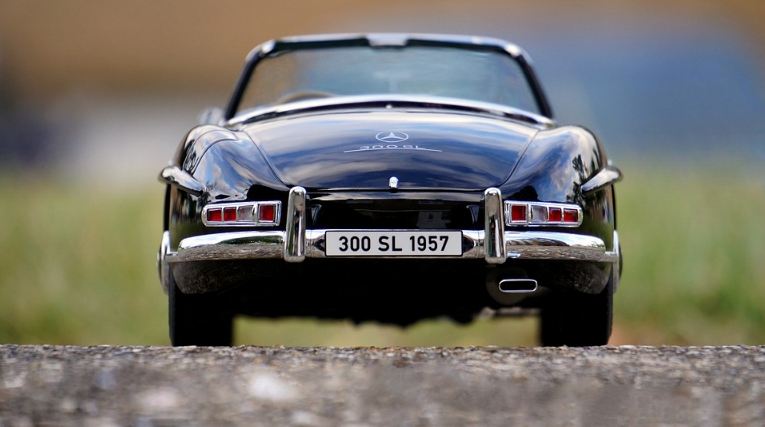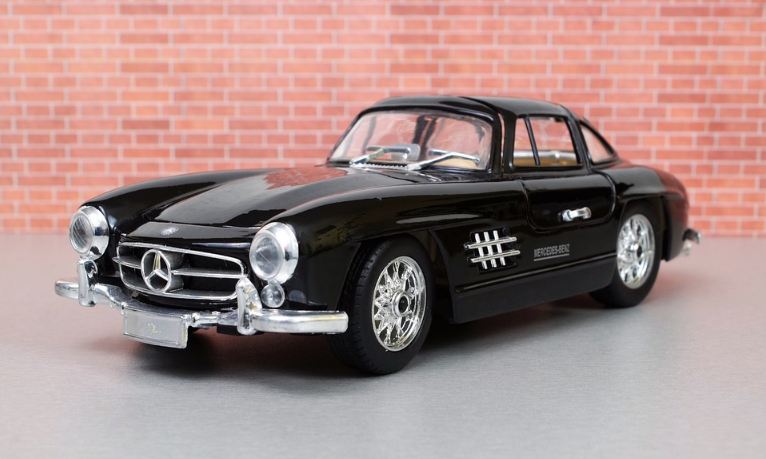The Mercedes-Benz 300 SL is a rare sports car that was manufactured by Mercedes-Benz from 1954 to 1963, and is one of the rarest cars in the world. The 300 SL has two versions, the first being the Coupe that is streamlined and cheaper, while the second is the Roadster that features more expensive parts and a more powerful engine. Because the company only produced this model for a short period of time, there were only a few of the 300 SL in existence, thus becoming one of the rarest cars in the world. What made the vehicle so attractive to car enthusiasts? Let us discover the answer to this question by taking a look at the fascinating history of the Mercedes-Benz 300 SL.
Origins of the 300 SL
Before we dive right into the origins of the 300 SL, let us first discuss the history of its predecessor, the Mercedes- Benz W194. The W914 was born out of the company’s idea to build a sports car that they can use to participate in races in the early 1950s. For the newly designed vehicle, they equipped it with the M186 engine, which was their largest engine in 1951. The said engine is also used in the W188 and the W186.
By 1952, the Mercedes-Benz W194 was able to take part in the most prestigious races, and one of those races was the Mille Miglia, an open-road endurance race that has been organized since 1927. In the Mille Miglia, the W194 won second place, and for another race called the Bern Sports Car Price, it won the top three places.
In 1953, Mercedes-Benz produced a new version of the W914 that features fuel injection and 16-inch wheels. Unfortunately, the new version did not appear in races, unlike the original W914, as Mercedes-Benz decided to focus their efforts in participating in Formula One in 1954. However, they still continued to produce the W914, but the later versions had lower air resistance and did not have transmission arrangement found in previous versions of the vehicle.
One of the more streamlined versions of the W914 was the 300 SL, but its production wasn’t originally planned by the company. The idea for making a budget-friendly version of the W914 was recommended by Max Hoffman, a New York-based importer of luxury cars in Europe, who communicated with Mercedes-Benz during a director’s meeting in 1953. The then-General Director of the company, Fritz Konecke, only agreed in Hoffman’s recommendation when the importer placed an order for 1000 vehicles. The 300 SL was then introduced a year later at the New York Auto Show, which is a peculiar release for Mercedes-Benz since they would usually introduce a new model at the Geneva International Motor Show or the International Motor Show Germany in Frankfurt. During the show in New York, the 300 SL was well-received, and the acclaim prompted Mercedes-Benz to pursue a larger production line for the car. Theproductionofthe 300 SL startedinAugust 1954.
The first version of the 300 SL was the Coupe, which is the one that was released in 1954. The Coupe was one of the best-sellers of the company in 1955, but by 1956, the sales for the Coupe declined. Mercedes-Benz then decided to revitalize the 300 SL by releasing another version called the Roadster. Before the Roadster was mass-produced, the company first introduced a convertible version of the 300 SL at the Geneva International Motor show in March 1957. Then, after receiving positive reviews among car dealers, owners, and enthusiasts, Mercedes Benz directed the 300 SL Coupe factory to focus on only making the convertible Roadster version.
Rather than having the “gullwing” door that the 300 SL Coupe is particularly known for, the 300 SL Roadster had traditional doors to make the vehicle more durable, although it did lose one of its stylish aspects. In addition, since it now has traditional doors, the Roadster has a retractable roof to allow an open-air driving experience.
Because the Roadster has been around in the market longer than the Coupe, it was able to steadily get sales for Mercedes-Benz. It is reported that there are only 1,200 Coupes that were made, while there were only 1,458 Roadsters. The Coupe has a relatively higher resell value not only because of its rarity but also because of its sleek and stylish gullwing doors. Interestingly, the 300 SL Coupe is considered as one of the first cars that have gullwing doors. Furthermore, the 300 SL Coupe’s influence can be seen in some of the most iconic cars in history, including the DMC DeLorean, which is famous for being the signature vehicle of Marty McFly in the Back to the Future movie trilogy. However, most of the vehicles with gullwing doors are poorly received by car enthusiasts until today, mainly because of its weight that can slow down the cars.


